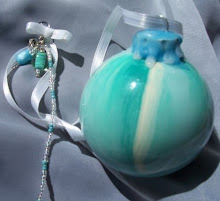She was the daughter of the Mother Goddess Don and her consort Beli.
A time later Gwydion presented Arianrhod with the object that he had hidden in the chest - a second boy child. Arianrhod was outraged at the "evidence" of her humiliation at the hands of King Math and rejected the child.
She laid on him three curses:
He shall have no name except one she gives him.
He shall bear no arms except ones she gives him.
He shall have no wife of the race that is now on the earth.
Gwydion was outraged by these curses and worked to break them. He disguised himself and the boy child as shoemakers and traveled to Caer Arianrhod. When Arianrhod went to have shoes fitted, the boy child threw a stone at a bird and deftly hit it. Arianrhod commented on the child's skillful hand. At that Gwydion revealed himself and the child and stated that she had just named him - Llew Llaw Gyffes, the Shining Skillful Hand. This threw Arianrhod into a firey rage and she stormed back to Caer Arianrhod swearing that the boy would never bear arms or have a human wife.
Again Gwydion tricked Arianrhod into breaking her own curse. He disguised himself and Llew as travelers and sought refuge in Caer Arianrhod. While they were there Gwydion caused an illusion showing a powerful armada of ships advancing on Caer Arianrhod. Making ready for battle Arianrhod threw open her armory and armed her retainers. Gwydion suggested to Arianrhod that she give arms to him and Llew (still in disguise) and they would fight at the defense of the castle. She readily agreed and thereby, unwittingly, granted arms to her son, breaking the second curse. Gwydion then revealed themselves to Arianrhod and told her that she may as well take the arms back from her son, as there really was no battle to be fought.
Enraged at being tricked a second time, Arianrhod took comfort in her third curse - that Llew would have no human wife. Gwydion, upset at the cruelty Arianrhod was showing her son, vowed to break this curse also. Gwydion went to King Math and explained Llew's plight. Combining their magic they created a woman made of flowers, Blodeuwedd, to be wife to Llew, and broke Arianrhod's third curse.
Humiliated by King Math, thwarted by her son, forsaken by her brother, Arianrhod retreated to her castle Caer Arianrhod. Here she later drowned when the sea reclaimed the land.
The poem is taken from the book "Ceridwen's Cauldron" by Gwdihw.
Lady Arianrhod
Arianrhod, Lady Fair
Fly over your caer, in the air
Served by the moth and the wren
The bat, bee and hidden men
Mother of Dylan, you did reign
You did not give his twin a name.
Your brother Gwydion sold you shoes
Your curse he made you quickly lose.
With a sling you saw your son
Lleu Llaw Gyffes, the fair one.
Arianrhod, Queen of the night
Refused arms for Lleu to fight.
When Math made ships out of mist
Lleu found a spear within his fist,
Her final curse forbade a bride
He found a flower maid by his side.
Gronw speared Lleu in the bowel,
Blodeuwedd changed from bride to owl
Arianrhod watched, high above
Giving Lleu both grief and love.
Binding him by silver thread
Thinking that he lay there dead.
Transformations took place
Feather grew from Lleu's face.
Gwydion changed him back to man
Healing him as magic can.
Arianrhod, Lady of the Wheel,
Reincarnator, help us heal.





